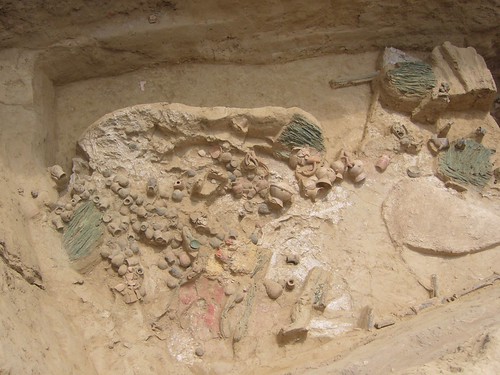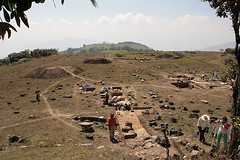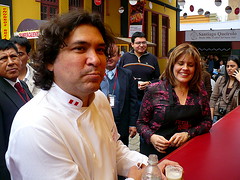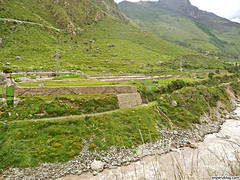The oldest construction in Peru
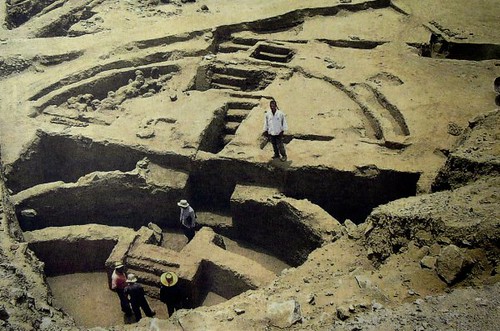
Now a seeming regular occurrence in Peru, ruins and civilisations thought to have been the oldest in the Americas have again be surpassed by new discoveries that push back the start of history in Peru and the American continent.
It now seems it was the Casma valley in Ancash in which the first societies with ceremonial structures developed. The oldest structure in America has be confirmed to be as much as 5500 years old, almost bringing Peru on par with the development of similar societies in Mesopotamia and Egypt.
The 25 carbon-dating test carried out in the zone leave archaeologists at the Sechín Bajo archaeological site in little doubt, the ancient sunken circular plaza of 12 metres in diameter is the oldest structure in Peru.
Sunken circular plaza’s are a recurring theme in Peru’s most ancient history. They were found in the ruins of Caral, an ancient civilisation of the coastal regions. They were found much later in the sites of the Chavín. Circular plaza’s then became square, still sunken, and this carried on throughout the ages.
This history of this new find began in 1992, when a group of German students visited the region as part of their studies. One student, Renate Patzschke, didn’t treat the trip as lightly as the others. She has remained on-site for 16 years, working with project director Peter Fuchs, and together have made this discovery.
The ruins of the circular plaza sit to the side of a structure of much later construction – the main focus of the project, perhaps until now.
It demonstrates that it was the Valley of Casma (so far) in which the first societies developed, putting to rest the theory that such societies first developed on the coast, then moving to the valleys.
“Before this find we thought that the oldest structures in Peru were on the beach of Huaynuna, north of the Bay of Tortugas, also on the Casma valley. There the Pozorski couple found a small temple that was from the end of the Archaic period, about 4000 to 3600 years ago. However, the finds in Sechín Bajo, especially the sunken circular plaza, have demonstrated that there are structures as much as 5500 years old”, said Fuchs.
As mentioned, these new finds were not the main focus of the project. Huge ruins of a much later period exist metres away. The circular plaza of 3,500 B.C. was eventually replaced by large building in-keeping with the larger population. We are not sure when exactly these were constructed, but they were again replaced by a third series of structures in about 1,600 B.C. which is what the project was initially studying the remains of. This structure is 180 by 120 metres long. In it’s first phase it had two large rectangular aligned patios, which in it’s second phase were subdivided into four patios with curved corners and niched walls. The complex structure was built from adobe and stone from nearby hills and constructed in such a way as to demonstrate a high understanding of architectural knowledge.
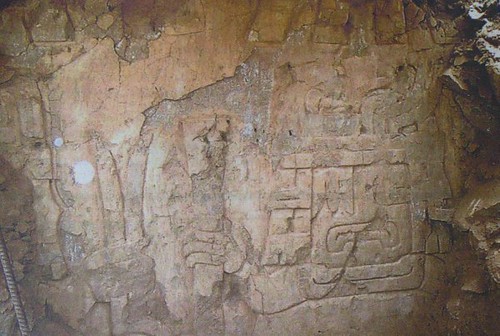
It was in the most recent structure too that a large high-relief carving was found showing a decapitating figure – a figure of myth with a long history in Peru. This mythical decapitator can now be said to be at least 3600 years old, perhaps the origin of the figure that survived throughout the thousands of years that followed. This decapitating figure is also shown with feline teeth… later to be a recurring theme in Chavín iconography, as well as two other recurring themes according to Fuchs; “In his right hand he has a ceremonial knife, in the left, he has a snake”.
Tags: ancash, caral, casma valley, chavin, ruins



